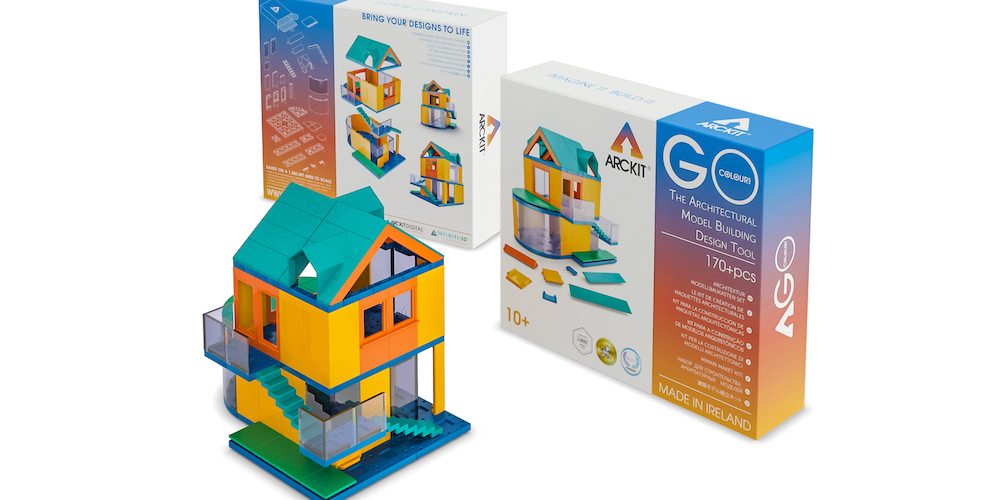
It’s no secret that we here at GeekDad and GeekMom are generally big fans of small plastic bricks. Many a GeekParent has passed their love of LEGO down to their children. What happens if those little plastic bricks sneak their way back in and you start building again?
Maybe there is a set that catches your eye that makes you say, “Ahh, just this once I’ll get one for me too.” Maybe the Saturn V (set 21305)—it’s excellent by the way—maybe the Overwatch sets coming in January or something that reminds you of a favorite from years ago.
You may have seen the work of Nathan Sawaya, Adam Reed Tucker, Sean Kenney, Ryan McNaught, Bright Bricks, the Master Builders who build for LEGOLAND parks and the LEGO Discovery Centers, or some other high-profile, prolific builders. There are books and LEGO cons as well. Or it may simply be that just building with your child has sparked your return to the brick.
Are You Emerging From the Dark Ages?
“Dark Ages” is LEGO slang for the years when we deem ourselves too old to play with LEGO bricks—until we rediscover them. If you find that you have a LEGO set list approaching the length of your kids’, you might be an Adult Fan of LEGO (AFOL). Welcome! The adult world of LEGO is a large and wondrous place full of clubs, conventions, online communities, and more.
ABS Anonymous
A great way to improve your building skills is to meet other builders! In the US, many major cities have at least one LEGO Users Group or LUG. This is true elsewhere as well, but a LUG can cover more than one city, a whole country, and there are purely digital LUGs as well. Most LUGs meet regularly, usually monthly but that will vary, and will do public display events. You can find your closest LUG through the LEGO Ambassador’s Network Community Locator. The Ambassador Network is how the LEGO Group communicates with the LUGs. LEGO User Groups are not part of the LEGO Group. The company recognizes the goodwill and brand awareness that the LUG Network provides. The Ambassador Network facilitates communication between the LEGO Group and LUGs.
Conventions and Public Displays
Like any fandom, there are LEGO gatherings. I have yet to go to a LEGO convention. There are many around the world. The two of the more well-known in the US are Brick World in Chicago and BrickCon in Seattle. These conventions have closed and public sessions. Closed sessions have building competitions, talks, and other events usually taking place on weekdays. The public is able to come into the display halls to see the various builds on display on the weekends. Public displays are required to be an official registered LUG. Putting on a display is a lot of work, and LUG members always love to discuss their creations. Your local LUG will likely have a list on their website. My LUG (GTWLUG) displays at area train shows, movie theaters for releases such as LEGO movies and Star Wars, events at local libraries, and has a month long display at a local Christmas lights display (we are indoors).
Brickspeak
Like any community, there is some specific lingo. I’m not going to be exhaustive here, so I’ll just cover a couple of the more common acronyms, that I haven’t used yet, to guide you on your way.
MOC – My Own Creation – This is the original thing I built!
SNOT – Studs Not On Top – Also known as sideways building SNOT is any technique that deviates from LEGO bricks stacked directly on top of one another.
NPU – Nice Part Usage – High praise for when a builder uses a piece in an inventive way.
BLEY – a portmanteau of blue and grey – In 2004, the LEGO Group made changes in the color palette, with the most noticeable shift in the grey bricks. The newer bricks are slightly more blue than the older bricks, leading to the nickname. While still used, this term may be starting to fade.
Purist – The level of which you tolerate clone brands (MEGA Blocks), 3rd party vendors (smaller companies that make elements that LEGO does not), and cutting and painting of LEGO elements. – Also known as a way to pick a fight. In my experience, many AFOLs are OK with the 3rd party companies, as they fill a niche LEGO does not (more realistic modern weapons or custom printed mini-figures and parts), but clones and parts modifications are right out.
Bricks Online

The AFOL community has a large online presence. The Brothers-Brick is one of the most well-known LEGO blogs. They cover MOCs and LEGO news. I’m also partial to BrickNerd as well. Brickset is your place for set reviews, tools to keep track of your growing collection, and online forums. Eurobricks is mostly a forum; I’m not current a user there, so I don’t know much.
There are countless Facebook groups, and the social media of your choice likely has someone posting about LEGO. There is a large community on Flickr, but Flickr’s recent policy shifts may have an impact on that community. The LEGO Flickr group is one of the most popular. Throughout the year, a number of building theme months and contests occur. Reoccurring events happening in November are the 16th annual Classic Castle Contest, the 10th annual Novvember Vic Viper (Gradius for the NES) build event, and the 4th annual Nerdvember contest hosted by Bricknerd.
Brick Lit
Another awesome source of brick knowledge is the wide array of LEGO books published in the last several years. Books about LEGO became more frequent about 10 years ago. This coincided with the 50th anniversary of the original LEGO Brick Patent and the 30th anniversary of the mini-figure.
I find that LEGO books come in four main styles: LEGO history, inspiration/art books, media tie-ins, and instructional. The media tie in books are squarely aimed at kids. The ones my family have read are fun, but are not why we are here today. DK has a very wide selection of LEGO books. Their selection covers all four styles. I have a few, and all are good, but they do tend to skew younger age-wise. The big draw for the DK books is they are officially produced LEGO books and will often come with exclusive mini-figures or small sets.
Where things get really interesting are the books written by fans for fans. In my opinion, No Starch Press is the place to start. There are other publishers with LEGO books, but No Starch has an excellent line. All of their books are either instructional, inspirational, or a hybrid of the two styles. A few of my favorites included The Unofficial LEGO Technic Builder’s Guide by Pawel “Sariel” Kmieć (a fantastic resource if you plan on exploring adding motion to your building), The LEGO Adventure Books by Megan Rothrock, and LEGO Space by Peter Reid and Tim Goddard. Also of note, GeekDad Emeritus John Baichtal co-wrote The Cult of LEGO with Joe Meno. It’s a great book, but not one I go to for reference often. Many of the DK and No Starch Press books have been reviewed by GeekDad and GeekMom, and have been well liked.
The Road to Becoming a Master Builder
This is but a small peek into the world of LEGO building as an adult. I wish you luck in your exploration. Don’t worry about how your building stacks up against others. In time you will learn, as Vitruvius says in The LEGO Movie, “Believe… I know that sounds like a cat poster, but it’s true.”




I forgot to mention the GeekDad LEGO flickr group!
And there is a brand new space contest this year starting December 1st called Space Jam check it out!